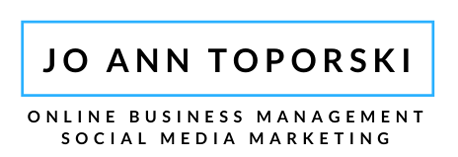In the first few years of business, small companies come up against a lot of different challenges. Some are harder than others to overcome — and according to the U.S. Bureau of Labor Statistics, about 20% of small businesses fail by the end of their first year. By the end of their fifth year, 50% go under; and by the tenth year, that number rises to 80%.
With survival rates like that, it’s easy to understand why folks face the first few years of business with trepidation. But in fact, many common business problems and challenges are actually fixable, from difficulty finding customers, generating leads, and building an email list, all the way to hiring the right people and balancing quality and growth. Many times, you’ll find you need to take a step back, take the time to understand the pain points you’re feeling, and re-think your strategy.
Here are six challenges every small business faces, along with some tactical advice about how to fix them. (And if one of the challenges you’re facing is growing your email lists and generating leads, then be sure to watch our workshop on how to do just that.)
6 Small Business Problems & How to Fix Them
1) Finding Customers
This first one isn’t just a small business problem. The marketers at well-known companies like Apple and Toyota and McDonald’s don’t just sit around waiting for the leads to come in: Even the biggest, most successful companies have people working hard every single day to find new customers.
But for small businesses that aren’t a household name, finding customers can be particularly difficult. For example, there seem to be so many channels you can choose to focus on … how do you know what to prioritize and where to allocate resources?
How to Fix It:
Finding customers starts with figuring how who your ideal customer actually is. Spraying and praying doesn’t work for anybody — you need to make sure you’re spreading the word to the right people.
Craft an idea of what your target customers look like, what they do, where they spend time online by building your buyer personas. (Here are some free buyer persona templates to get you started.) Creating very specific ones can dramatically improve your business results. Once you’ve built your buyer personas, you can start creating content and getting in front of your target customers in the places they spend time online and with the messages that they care about.
2) Hiring Talented People
Hiring is often one of the biggest challenges for small businesses, especially since small business executives tend to feel under-resourced to begin with. Hiring new employees is a big deal and a complex process, and the cost of onboarding is an average of over $4,000 per new employee for most companies. And if you don’t hire well, employee turnover can be very, very expensive.
But, as CEO of 2020 On-site Optometry Howard Bernstein said in our panel on how to start a business, it’s impossible to know everything yourself. That’s why finding and hiring the right people — and the people who are really excited about what you’re doing — matters.
How to Fix It:
It’s easy to hire with a short-term mindset: send out a job description, screen applicants, and make a decision. But because of the high costs of hiring right, it’s important to invest a significant amount of time in the hiring process. Don’t settle for good employees when you can find great ones, even if it takes longer. It’s the great employees that will help your company get to the next level.
Just like you create buyer personas for your customers, create candidate personas for your job candidates. Your personas should be different for each new role that you’re hiring for, but will share some underlying traits around company culture.
Next, take ownership of attracting candidates to your company’s brand and make them interested in learning more. This will help you build a recruiting pipeline that will give hiring the same predictability as sales. Then, turn those leads into applicants.
3) Spreading Brand Awareness
It can sometimes seem like today’s biggest brands seemed to have popped up out of nowhere. How did they become a household name? How did they grow that quickly? Can your business grow like that, too?
Of course, most of these companies’ hard work, failures, and rejections happened behind the scenes. But there are strategies for spreading the word about your brand and building a great reputation that you can start right away.
How to Fix It:
There are many ways to spread brand awareness, but the three I’ll touch on here are PR, co-marketing, and blogging.
- PR: Public relations is less about paying for a spot in a news blog, and more about focusing your voice and finding your place in the market. I recommend reading this great post from FirstRound Capital on what startups and small businesses often get wrong about PR, which also includes some great, tactical tips on how to figure out who’s covering your industry, building relationships, and working with reporters. You can also download our free public relations kit to learn how to maximize your public relations efforts with inbound marketing and social media.
- Co-marketing: Partnering with another brand will help you inherit some of their image and reputation and create brand evangelists outside your circle. It’s a fantastic way to gain a large volume of new contacts alongside your organic marketing efforts. You can read our ebook on how to get started with co-marketing for more helpful information.
- Blogging: Running a consistently high-quality blog will also help you build brand awareness. Not only does a blog help drive traffic to your website and convert that traffic into leads, but it also helps you establish authority in your industry and trust among your prospects. Many people find out about HubSpot because of our blog posts. It’ll also help you build an email list, which brings us to our next point …
4) Building an Email List
As if it isn’t hard enough to build an email list, did you know your email marketing database degrades by about 22.5% every year? That means you have to increase your email list by almost a quarter to just maintain it, never mind grow it. It’s the marketing team’s job to find ways to constantly add fresh, new email contacts to your lists.
But what many people call “building an email list” is actually buying an email list — and buying an email list is never a good idea. I repeat: Never a good idea. Not only will your email deliverability and IP reputation be harmed, but it’s also a waste of money. If your current strategy is to buy or rent email lists, then it’s time to regroup and find better places to put those resources.
How to Fix It:
Instead of buying or renting lists, build opt-in email lists. An opt-in email list is made up of subscribers who voluntarily give you their email address so you can send them emails. One great way to build an opt-in list is by creating great blog content and making it easy for people to subscribe — which, at the same time, will help you increase your online presence, build up search authority, and create evangelists from your content.
You can also revive older lists that you think are mostly decayed by creating an engaging opt-in message and sending it to your old list encouraging contacts who wish to re-opt-in and promising to remove all contacts who don’t respond.
See full article at:
https://blog.hubspot.com/marketing/small-business-challenges#sm.01och1j214f0ddq11g328qlp0a1e3



Recent Comments